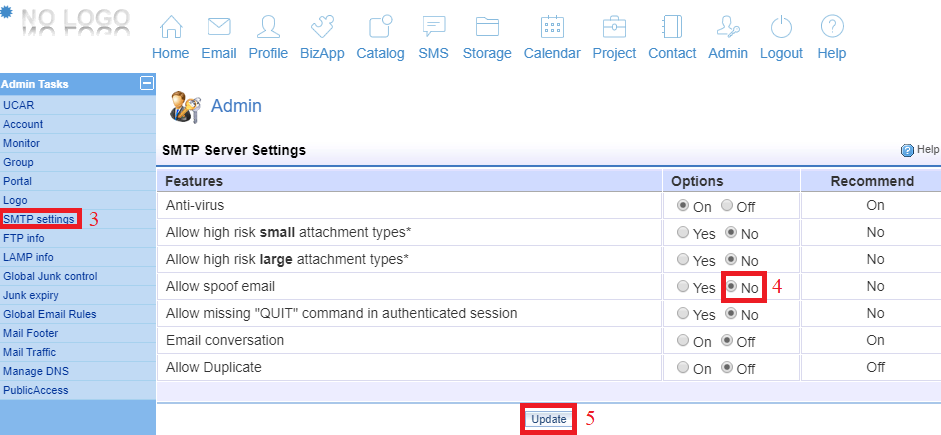How to prevent email being spoofed?
Email spoofing is when someone sends an email pretending to be someone they are not. Such email appears to be originated from a trusted sender - such as customers, coworkers or managers, or even yourself - but they are actually sent from cyber-criminals, who would trick you into transferring money to them, downloading an attachment with malware that could infect to your entire network, providing them your personal information for fraudulent purposes, and more.
While there is no fool-proof way to prevent abuse to your email address, here are several practices that you can adopt when it comes to securing your email address:
- Set the “Allow spoof email” settings to No in your SMTP Settings. You can find this settings by logging in to your webmail as the Avomaster or voadmin, then go to (1)Profile → (2)Admin → (3)SMTP settings. Click on the (4)No option. Remember to press (5)Update once you have done setting.
- Change your password frequently; use strong password that is difficult to guess. Refer to the link here to change your password.
- Run full virus scans on your computer at least once a week.
- Avoid including your email address in online blogs or posts. Try using (at) and (dot)com instead of @ and .com to prevent malicious automatons from harvesting your address. E.g. instead of using an email of user401@domain.com, we type it as user401(at)domain(dot)com .
- Only use your primary email to communicate with people you know or trust or to deal with important messages.

